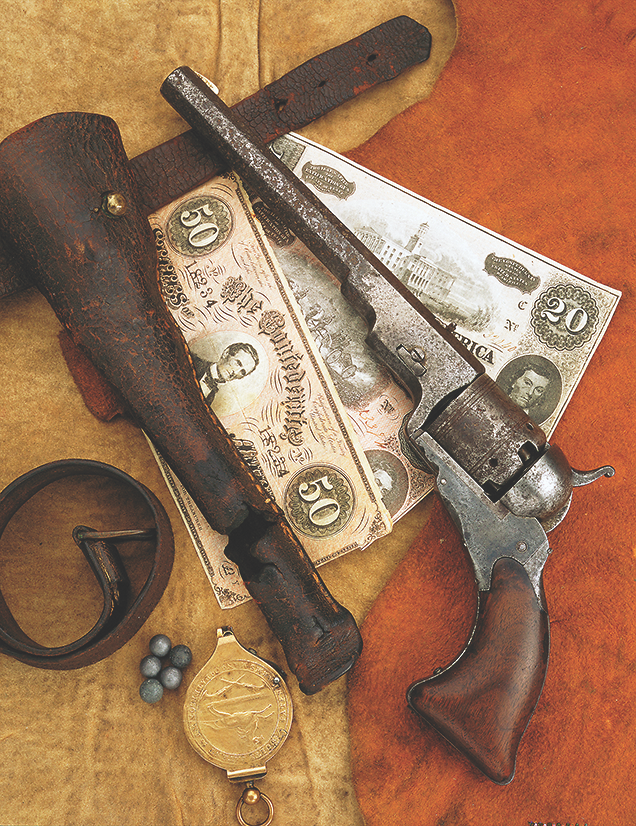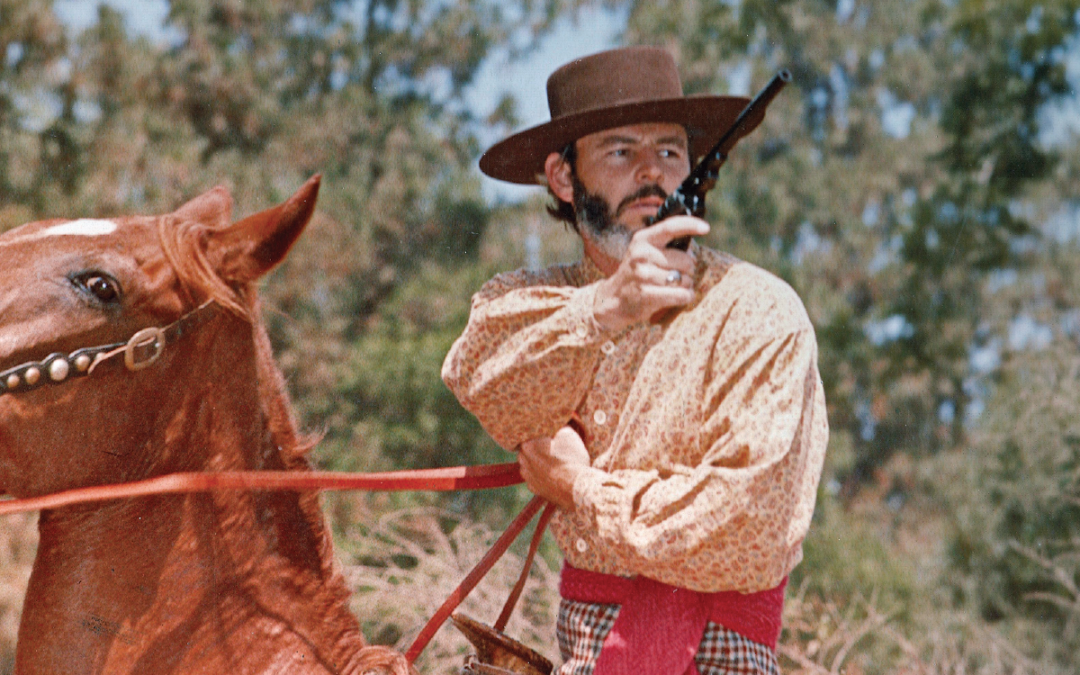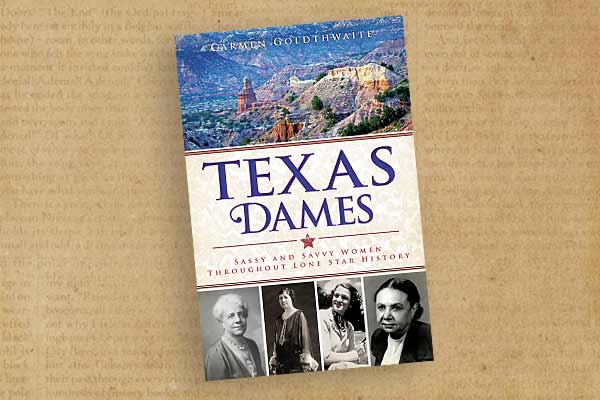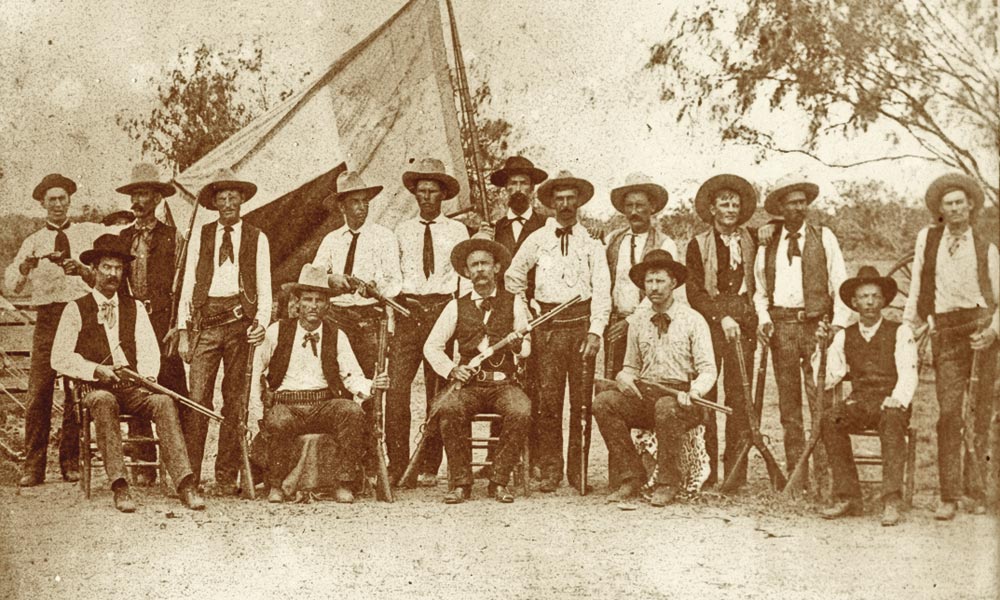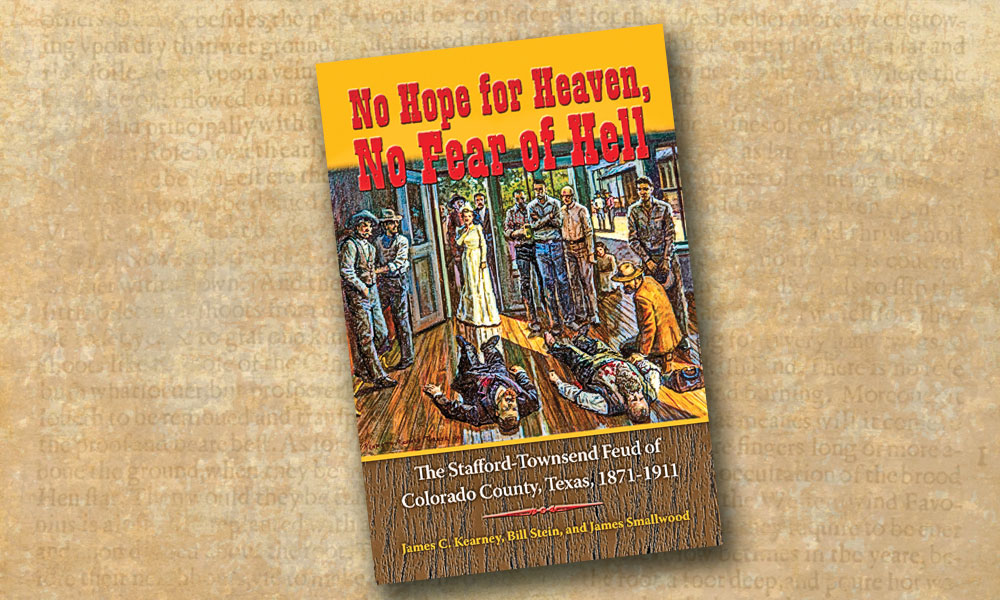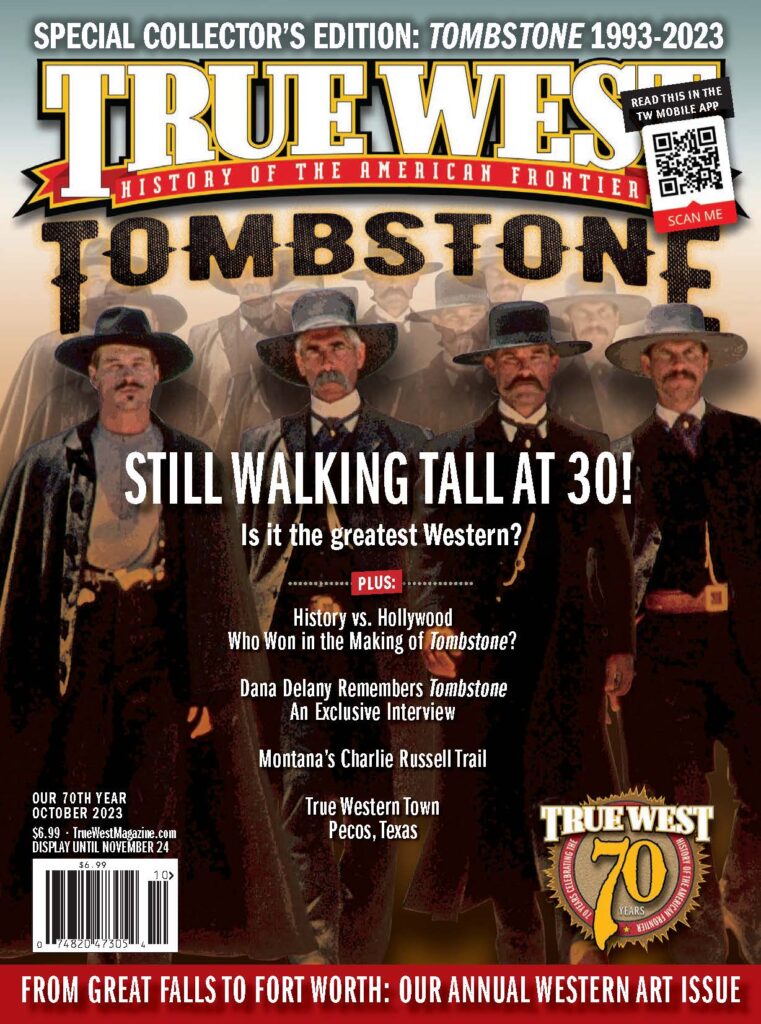One hundred and eighty years ago, Samuel Colt’s revolutionary handgun broke trail for the Lone Star State and has been associated with Texas ever since.
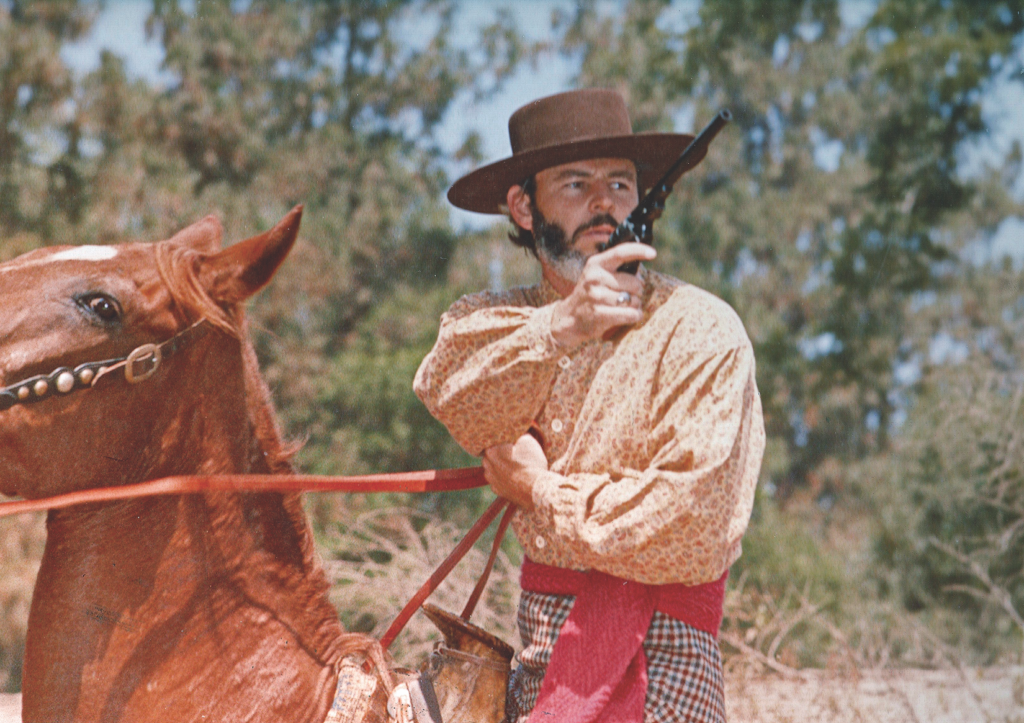
Photo of Phil Spangenberger, ca. 1972, by Robert Nese
Why is the famed Colt Paterson, the first truly practical revolver, so often associated with Texas, even though it saw use worldwide? How is it that the Lone Star State is usually the locale that comes to the minds of so many Colt collectors, firearms enthusiasts and shooters?
While Colt’s Patent Arms Manufacturing Company produced these single-action “five shooters” in Paterson, New Jersey, Col. Samuel Colt’s revolutionary revolver saw limited use in many places worldwide, like the territories along the Santa Fe Trail, the Pacific coast, Europe and in Great Britain’s far-flung colonies. However, it was in the fledgling Republic of Texas where they gained their main claim to fame. In April of 1839, Colt sold 180 of his No. 5 holster pistols with nine-inch barrels, along with the same number of carbines to the Texas Navy. When this corps disbanded in 1843, Colts that were still serviceable were transferred to the Texas Rangers, with each man issued two or three revolvers, along with, as one veteran frontiersman recalled, “a Bowie knife in his belt and a short rifle on his arm.” The Rangers were considered as formidable a band of fighters as could be found anywhere in the world at that time.
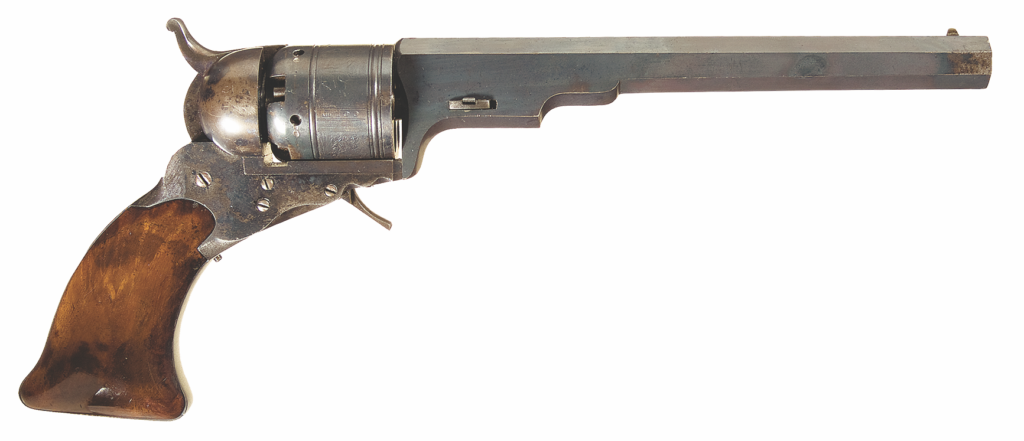
Courtesy Rock Island Auction Co.
Their battle-hardened legacy includes the 1844 Pedernales River fight, where a patrol of 14 mounted Rangers, under the command of
Col. John Coffee “Jack” Hays, was attacked by a band of 80 Comanche wariors. Although greatly outnumb-
ered, the Rangers routed the Indians, leaving close to half of the hostiles on the field dead or dying. Interestingly, this battle inspired the creation of the “Ranger and Indian” fight scene cylinder roll engravings on Colt’s early caplock revolvers. This dramatized image appears on the massive 1847 Walker model, the pocket-sized 1848 “Baby Dragoon,” and the hefty 1st, 2nd and 3rd Model Dragoons (produced 1848-1860).
One of the advantages of the Paterson over other handguns of the day was accuracy due to its rifled barrel, and the Colts quickly became one of the Rangers’ primary arms. Some Texan accounts recall their use of their .36 caliber Patersons at unheard of distances out to 200 yards. Modern gunners should bear in mind that even if one were hit at such a range, given the primitive medical technology of the day—and that of the Indigenous people—the slightest wound could prove deadly—or certainly disabling.
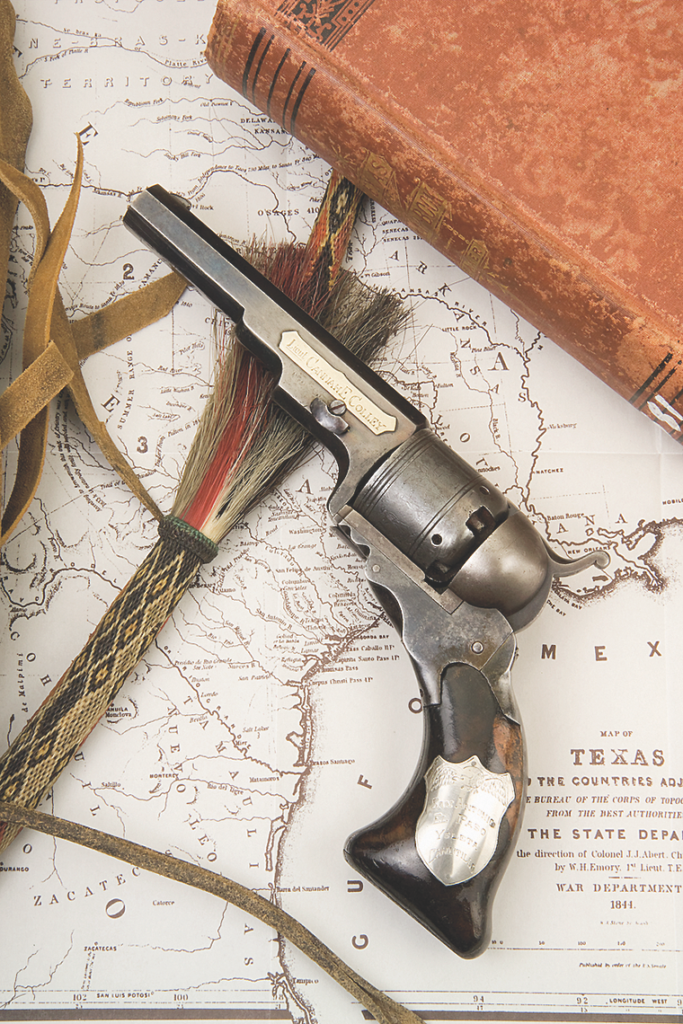
New and cased with loading accessories and an extra cylinder, a Paterson would fetch from $40 to $50. Its chief rival, the grossly inaccurate smoothbore, multi-barreled “Pepperbox” (so named because it resembled a pepper canister of the era) double-action revolving pistol sold for about one fourth of that price. Despite pepperbox pistols outselling Colt’s revolvers by a consid-erable margin, the success of Colonel Sam’s “revolving pistol” invention in the hands of notable frontiersmen of the day—especially in Texas—broke ground for Colt’s later and much-improved handguns.
Unfortunately for Colt, poor sales and company management troubles led to its downfall in 1842, having produced only around 2,850 Paterson revolvers (including around 1,000 No. 5 models), about 1,650 revolving rifles and carbines and approximately 225 multi-chambered shotguns. Regardless of these setbacks, along with the Paterson rifle’s poor performance in the humid swamps of Florida, where the 2nd U.S. Dragoons used them during the Second Seminole War, the many positive comments from Texas frontiersmen outweighed the negative reports from other sources.
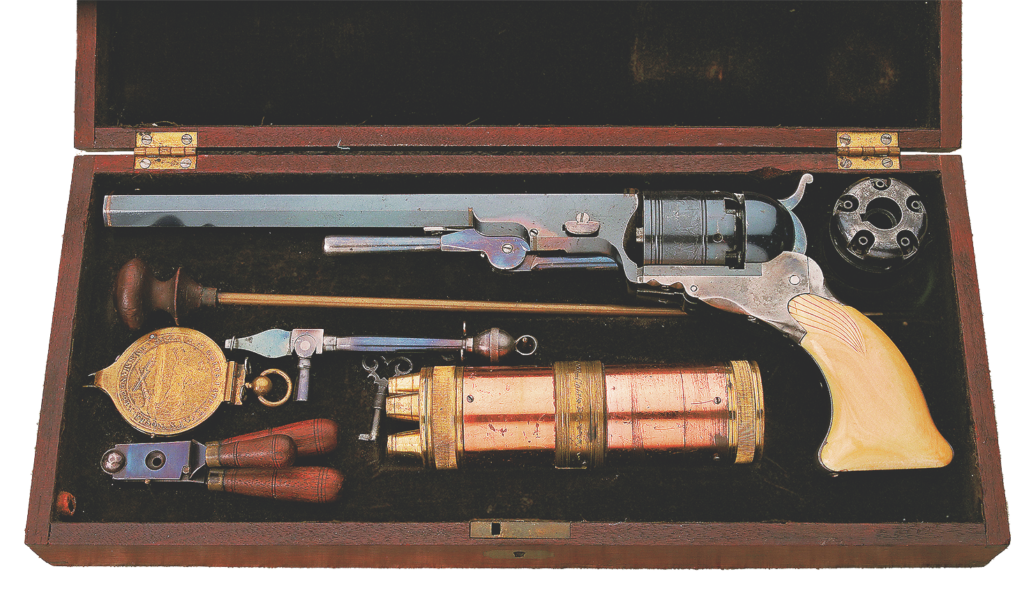
Now 180 years later, despite the fact that the Paterson saw use worldwide, Colt and firearms enthusiasts can thank Texas for its part in resurrecting Colonel Sam’s company and for endorsing the revolver as a practical handgun. With sanctioning from Texas’s battle-hardened frontiersmen, and Ranger Capt. Sam Walker’s involvement in creating Colt’s famed Walker revolver, Colonel Colt went back into business for good. Among arms students, the Lone Star State is more associated with the Paterson Colt than any other locale. One could argue that Texas saved Colt. Well done, Texas!
